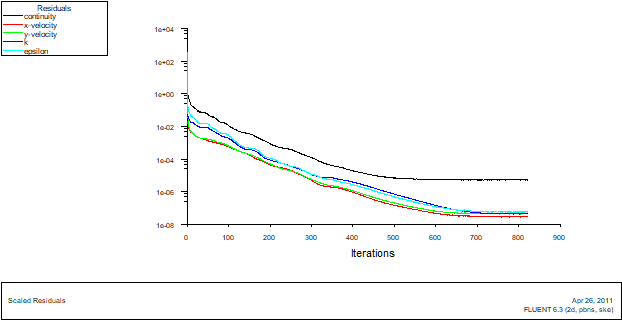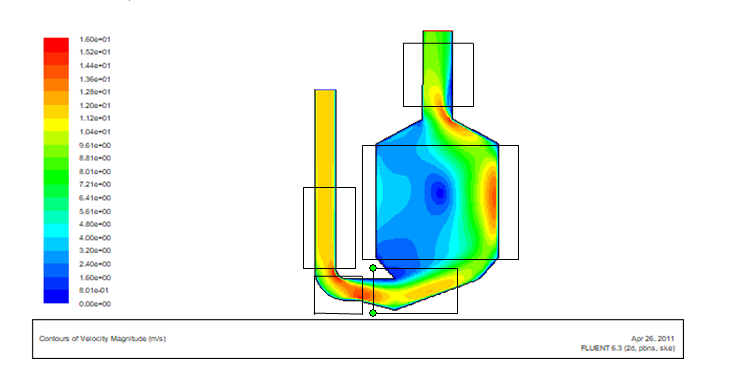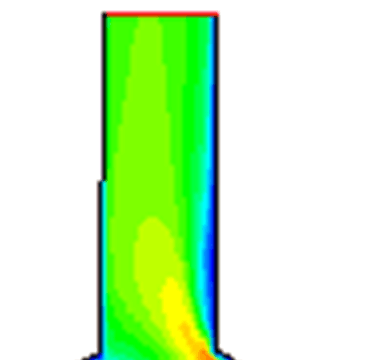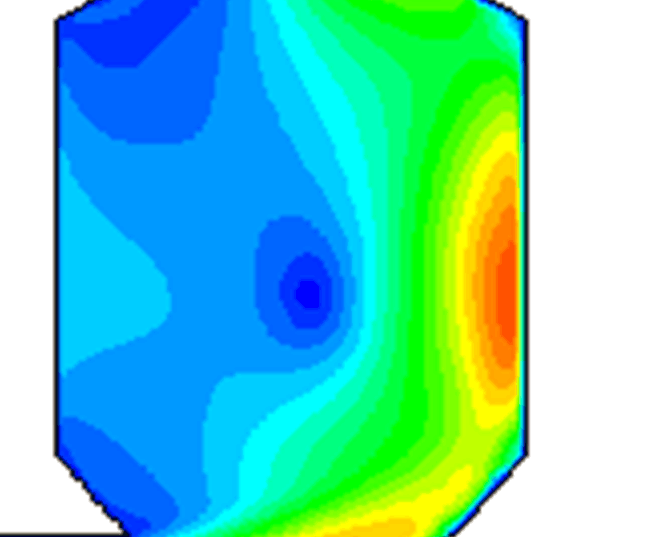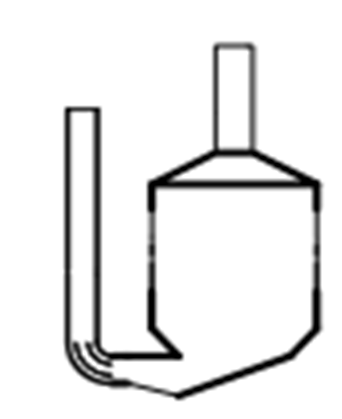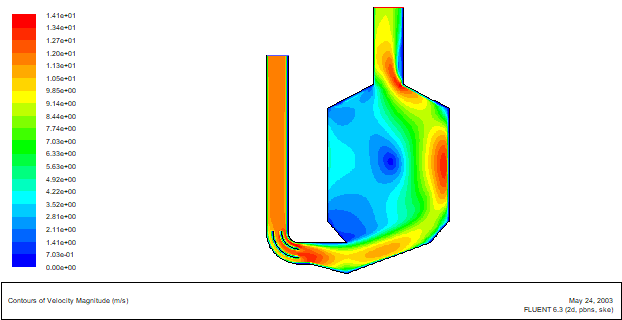TZJ05海韵焙烧炉湿电除尘系统内流场数值计算毕业论文
2020-07-11 18:06:17
摘 要
本文以某电厂的焙烧炉湿电除尘系统为例,然后对其内部流场的分布情况,用相关软件进行模拟分析,并对模拟得到的结果进行讨论,通过改变导流板类型、数量以及方向,得出不同的模拟结果,并对这些结果进行对比分析及讨论,得出改善速度流场分布的方法。
本文得到结论主要有:
(1) 添加导流板可以有效的改善流场内速度分布情况,在急拐弯处可以添加合适的弧形导流板,而在反应器入口则安装直导流板,其角度与烟道相关,与烟道平行即可。而在增加导流板数量的过程中我们发现合适的导流板数量也可以有效平衡流场速度分布。
(2)在3维模拟的过程中发现,采用多孔介质模型进行模拟是改善流场最有效的手段之一。增加阳极模块之后,流场的速度分布十分均匀,完全接近理想的结果,完美符合任务设计要求。
关键词:湿电除尘;数值模拟;烟道流场;流场
Abstract
In this text, an example of the wet electrostatic dust removal system for a power plant then, the distribution of the internal flow field is simulated and analyzed by the software, and the results of the simulation are discussed, and the different simulation results are obtained by changing the type, quantity and direction of the deflector, and the results are analyzed and discussed, The method of improving velocity flow field distribution is obtained.
The main conclusions of this paper are:
(1) Adding a diversion plate can effectively improve the velocity distribution in the flow field, in the sharp corner can be added suitable ARC guide plate, and in the reactor entrance is installed straight guide plate, its angle and flue-related, parallel to the flue. In the process of increasing the number of the plate, we find that the proper number of deflector plates can also effectively balance the velocity distribution of the flow field.
(2) in the process of 3-D simulation, it is found that using porous media model is one of the most effective methods to improve flow field. After the anode module is added, the velocity distribution of the flow field is very uniform, which is close to the ideal result and meets the requirements of the task design perfectly.
Key words: Wet electrostatic precipitator; numerical simulation; Flue flow field; Flow field.
正在翻译中..
目 录
摘要 Ⅰ
Abstract Ⅰ
第一章 绪论 1
1.1研究背景及意义 1
1.2国内外发展概况 1
1.3、国外湿式电除尘器发展历程 2
1.4研究目的和意义 2
1.5 CFD简介 3
1.6论文的研究内容 4
第二章 数值模拟介绍 6
2.1数值计算的基本思想 6
2.2数值计算的基本方法 6
2.3、描述方程 7
2.4方程的单值条件 8
2.5网格划分原则 8
2.6数值计算误差分析 9
第三章 几何模型的建立 10
3.1任务书及设计要求 10
3.2几何模型的建立 10
3.3利用GAMBIT软件生成并划分网格 10
3.4利用FLUENT软件初步模拟 11
第四章 案例分析 13
4.1第一次改良方案 13
4.2第二次改良方案 14
4.3第三次改良方案 15
4.4 三维流场的数值模拟 16
第五章 总结 20
5.1结论 20
参考文献: 21
致谢 22
第一章 绪论
1.1研究背景及意义
从目前国内电厂湿式电除尘器的发展和应用历程出发,虽然起步较晚,但发展迅速,具有良好的市场应用和发展空间。
基于目前湿式电除尘器的良好发展空间和前景,对电厂除尘设备的应用可以为满足国家政策要求,实现自我发展。针对除尘器应用过程中存在的问题,必须严格控制材料,以提高设备运行的可靠性,提高设备的使用寿命,减少维护和管理成本,加大对湿电除尘技术的研究与应用 [1]。
首先,空气污染处理的重心依旧是固体颗粒。因此在我国加强环境保护的前提下,处理微粒物质的关键仍然PM2.5。由于干式除尘器的效率低,所以我们应该加大对湿电除尘器的使用与推广[2]。其次,在现阶段,我国大多数燃煤电厂都使用湿法脱硫技术,在这种情况下,湿式电除尘器也将能很好地发挥它的作用,因为湿电除尘设备的酸雾和小颗粒污染物的吸收能力强有效,这正是燃煤电厂的需要[3]。三是积极使用湿电除尘技术, 及时有效地更新改进环保设备,使用整体布置垂直气流的方法,让湿式电除尘器逐步取代传统的除尘器,以避免对烟道的侵蚀,从而能有效遏制石膏雨现象的发生[4]。总而言之,对湿电除尘系统的研究和广泛地应用到相关领域,可以大大的提高除尘效果,减少污染气体的排放,有利于保护环境。
1.2国内外发展概况
相关图片展示:
